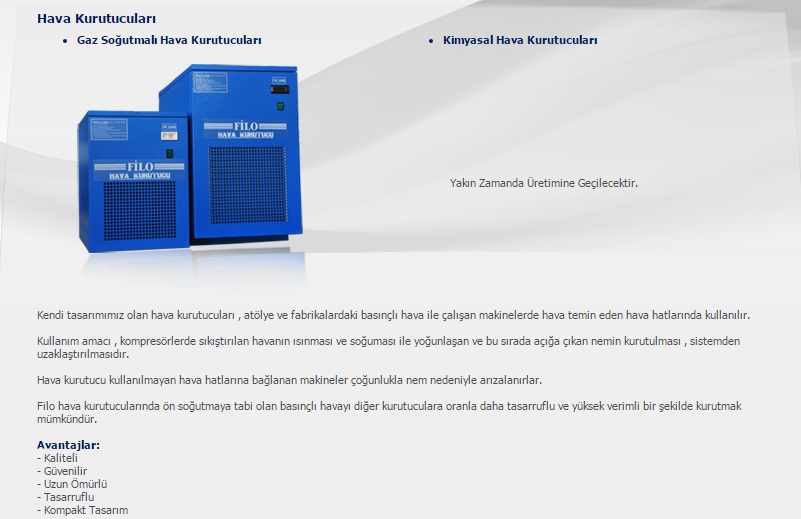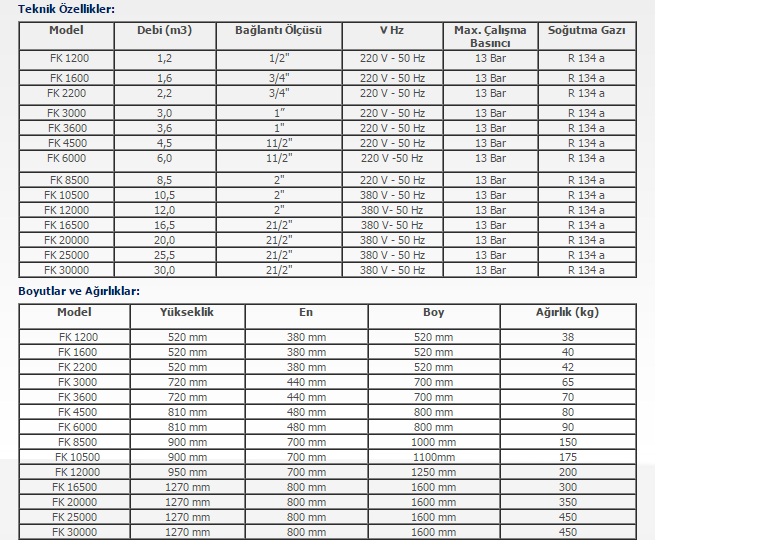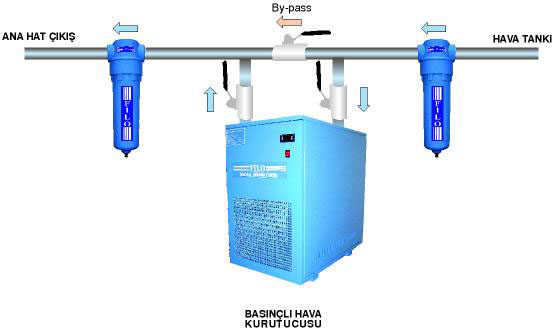COMPRESSED AIR DRYERS

Since compressed air is derived from normal atmospheric ambient air; In the case of water vapor contains moisture. The amount of water varies with temperature. The warmer the weather; so much water vapor can carry. If this humidity is not controlled; it liquefies in the compressed air installation and causes many problems. The dust in the air sucked from the atmosphere and the lubricating oil from the compressor together form a very damaging paste. This paste impairs seals, affects; damages the airy hand tools and cause the control and measuring instruments to work incorrectly. Although filters are used to clean, the air in the compressor outlet has little or no particles, oils and moisture. Air driers are also needed at this point. The dryers are concentrated by the heating and cooling of the compressed air and the resulting moisture is dried and removed from the system. If we look at the working principles of fleet gas-cooled air dryers in detail, untreated compressed air will cause corrosion, malfunction and loss of capacity in the machine-unit and air-operated machines to be used due to moisture, dust, oil. For this reason, the compressed air temperature must be reduced beforehand in order to prevent condensation of moisture in the compressed air system. The moist compressed air enters the heat comparator first, where it is pre-cooled by the cold (dried) air, which saves energy. When the compressed air is cooled, the water, which is converted from the vapor state to the liquid, changes the speed and direction and the water is separated from the air in the separator and ejected by means of the automatic discharge device. The dehumidified cold (dried) air finally passes through the air heat exchanger while cooling the incoming humid air while the heat itself is heated and expelled from the dryer.




